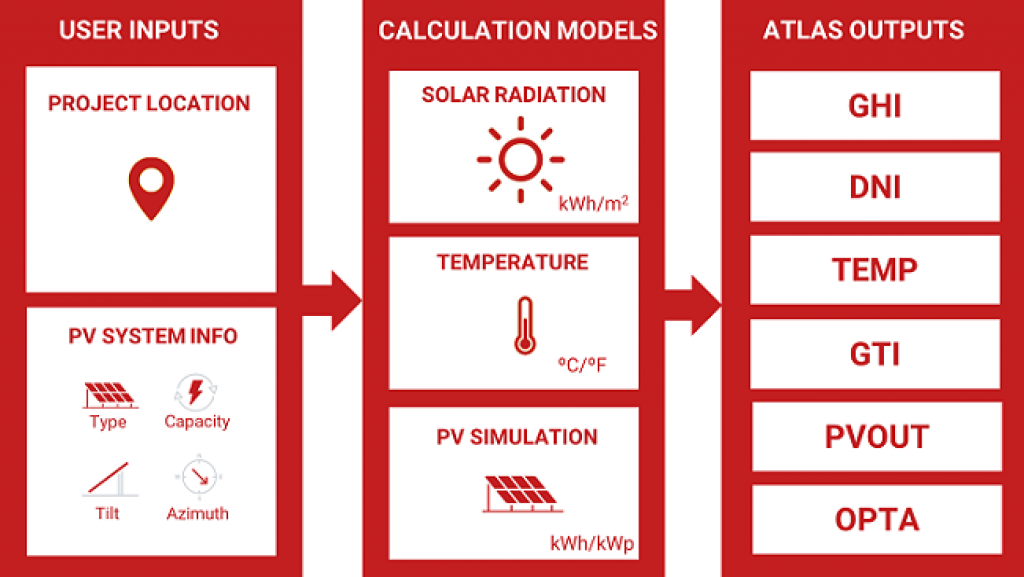
Those of you looking to design your own 2000 kWh solar system will need to establish the number of solar panels you’ll require to meet that energy output.
Thanks to data from geostationary satellites and meteorological models, we can now accurately predict the average electricity production of solar panels (kWh) anywhere on the planet.
Let’s be honest, 2000 kWh is a pretty substantial figure. You may even be questioning whether it’s possible to produce that amount of electricity on your property. Well, we’re here to tell you that, yes, it is totally feasible.
Indeed, solar systems are modular; they can be scaled up from a few units for domestic production to thousands of modules for solar farming.
In our article, we show you how to estimate the number of solar panels required for a 2000 kWh output, their cost, and ultimately how much you can save (and even earn) with this system.
Affiliate Disclaimer
Table of Contents
How Many Solar Panels Do I Need For 2000 kWh Per Month?
A Californian resident would require x27 500-watt solar panels to produce a total of 2000 kWh per month. Conversely, a New York resident would require up to x38 500-watt solar panels to produce the same amount of energy.
Let’s see how we arrived at these figures.
Calculating The Number Of Solar Panels Required
Many websites will provide a simplified equation to help you estimate the number of solar panels required. We prefer to use the complete mathematical model developed by Solargis for Global Solar Atlas. It is the most accurate and considers all possible factors influencing solar electricity production.
But not to worry, we’ll guide you through this process and make things easy for you to understand!
Models For Solar Calculation
As you may know, your solar panel production is directly related to the amount of sunlight your location receives, also called Global Irradiation (GI).
But, that’s not all; other variables affect daily production, such as:
- Temperature
- Solar panel tilting angle and direction
- Local shading
- DC to AC conversion losses (from a solar inverter)
The model developed and used by Global Solar Atlas is the most accurate. It takes into account all the variables mentioned above and divides them into three sub-models:
- Solar radiation model
- Air temperature model
- PV power model
The results of the three models are then combined to provide a precise estimation of solar production, as pictured below:

In the end, you’ll only need to enter the following data:
- Project location
- PV system information (optional)
Below is an example in which the only input data is the location (Los Angeles):

Source: Solar Global Atlas
PVOUT For Solar Calculation
You’ll need to use PVOUT (PV Power Out) to calculate your required number of solar panels,
PVOUT is the most relevant output data — represented as kWh/kWp per day; it signifies electricity production for every kWp (1000Wp) worth of solar panel.
For example, in Los Angeles, the average PVOUT is 4.9kWh/kWp; this translates into 4.9 kWh produced for every kW of solar panel.
In our scenario, we want to determine the number of solar panels for 2000 kWh per month. So, let’s consider a system built with 500-watt solar panels and apply an easy-to-use formula.

In this equation:
- Target kWh output is 2000;
- PVOUT is 4.9; and
- The power of a single solar panel is 0.5kW
Please note: always use kWh and kW in the formula. A solar panel of 500W is equal to 0.5kW.
Additionally, the average number of days per month is 30.4.
The result is 26.8. Therefore it takes 27 500-watt solar panels to produce 2000 kWh per month in Los Angeles.
Number Of Panels Required To Achieve 2000 kWh In Each Of The 10 Most Populated U.S. States?
| State | Number of 500W solar panels to produce 2000 kWh a month | Total PV power (kW) |
|---|---|---|
| California | 27 | 13.5 |
| Texas | 30 | 15 |
| Florida | 30 | 15 |
| New York | 38 | 19 |
| Pennsylvania | 38 | 19 |
| Illinois | 34 | 17 |
| Ohio | 35 | 17.5 |
| Georgia | 30 | 15 |
| North Carolina | 31 | 15.5 |
| Michigan | 37 | 18.5 |
From this chart, you can see that location plays a significant role in the number of solar panels you’ll require:
How Much Does A 2000 kWh Solar System Cost?
The average cost for a 2000 kWh solar system is $26,000 ($0.0362/kWh). This price considers installation and a 26% tax rebate.
This figure is 4 times lower than the US electricity price ($0.15/kWh).
Consider the Components
We included system parts, installation, and tax rebates to estimate the total cost. We are also assuming that the installation will take place on a roof.
Additionally, the Levelized Cost of Energy (LCOE in $/kWh) is the best metric to determine the actual cost of electricity over your system’s lifetime.
Therefore, to calculate a solar system’s LCOE, you must consider all of the expenses related to the system over its lifetime, including installation and maintenance.
Assuming that maintenance costs are negligible, the calculation is as follows:

- There are 360 months in 30 years (the expected life duration of a system).
Let’s have a look at the results for the following 10 U.S. states:
Cost Of A 2000 kWh Solar System In Each Of The 10 Most Populated U.S. States
| State | Total cost of 2000kWh solar system (inc. installation and 26% federal tax rebate) – $ | Levelized cost of solar electricity ($/kWh) |
|---|---|---|
| California | 21,821 | 0.030 |
| Texas | 23,890 | 0.033 |
| Florida | 22,469 | 0.031 |
| New York | 33,187 | 0.046 |
| Pennsylvania | 28,686 | 0.040 |
| Illinois | 27,478 | 0.038 |
| Ohio | 26,526 | 0.037 |
| Georgia | 22,647 | 0.031 |
| North Carolina | 23,310 | 0.032 |
| Michigan | 30,780 | 0.043 |
Again, we see considerable discrepancies in the results. California is the most favorable state with the lowest solar electricity cost at only $0.03 per kWh.
Related Reading: Solar Panel Dimensions Chart
How Much Money Will A 2000 kWh Solar System Save Me?
A 2000 kWh solar system will save you an average of $300 per month, around $100,000 over its lifetime. This figure varies drastically depending on the price of electricity in your state.
Remember: the cost of electricity is indicated on your utility bill and is expressed in $/kWh.
Assuming that you’re consuming or selling your 2000 kWh of electricity to a utility company through a net-metering scheme, we calculate as follows:

That translates into, 2000*0.15=$300
Please note: in this scenario, we assume that your utility company has a favorable net metering scheme in which every kWh you sell is compensated for at the standard electricity price ($0.15/kWh). This might not be the case everywhere, as utility companies can apply lower rates (10 to 20% lower than regular electricity prices).
Let’s evaluate how much money you can save with a 2000 kWh system in the following 10 U.S. states:
How Much Money Will A 2000 kWh Solar System Save Me In Each Of The 10 Most Densely Populated U.S. States?
| State | Cost of electricity ($/kWh) | Savings per month ($) | Lifetime savings (30 years) – $ | Number of years before payback | Net earnings ($) |
|---|---|---|---|---|---|
| California | 0.2671 | 534.2 | 192,312 | 3.4 | 170,491 |
| Texas | 0.128 | 256 | 92,160 | 7.8 | 68,270 |
| Florida | 0.135 | 270 | 97,200 | 6.9 | 74,731 |
| New York | 0.1974 | 394.8 | 142,128 | 7.0 | 108,941 |
| Pennsylvania | 0.147 | 294 | 105,840 | 8.1 | 77,154 |
| Illinois | 0.1473 | 294.6 | 106,056 | 7.8 | 78,578 |
| Ohio | 0.1287 | 257.4 | 92,664 | 8.6 | 66,138 |
| Georgia | 0.1289 | 257.8 | 92,808 | 7.3 | 70,161 |
| North Carolina | 0.1224 | 244.8 | 88,128 | 7.9 | 64,818 |
| Michigan | 0.1743 | 348.6 | 125,496 | 7.4 | 94,716 |
Thanks to high solar irradiation and high electricity prices, California is the most favorable state to install solar panels. The payback period of a 2000 kWh system in this state is less than 4 years!
Please note: although we try to be as close to reality as possible, prices may slightly fluctuate over time.
Final Thoughts
Producing 2000 kWh of solar energy a month is feasible in every U.S state. It will take 26 solar panels in the most favorable state (Arizona) to 40 panels in the least favorable state (Washington).
Consequently, the cost of a 2000 kWh varies drastically from one state to another, from $22,000 to $35,000.
Even if there are some variations, the price of solar electricity is extremely low compared to regular electricity, which translates into a system payback period of 3.4 years at best and up to 9 years at worst.
We conclude that a 2000 kWh solar system is a profitable investment that could save you tens of thousands of dollars over the next 30 years.
If the initial capital is too high, there are other options; you could still join a virtual solar cooperative, an excellent solution for micro-communities to generate electricity at the lowest cost possible.









